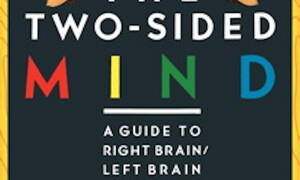ADVANCE for Medical Laboratory Professionals – August 25, 2009
This fall, seniors at Atkins Academic and Technology High School in Winston-Salem, NC, will learn about biotechnology and produce animated educational videos about the science through a joint project with local educators, scientists and animators.
Partnering with the high school in the project are Wake Forest University’s department of physics, the Center for Biomolecular Imaging of Wake Forest University Health Sciences, the Center for Design Innovation, and faculty and students from 3-D animation programs at Winston-Salem State University, the University of North Carolina School of the Arts and Forsyth Tech.
Animations produced at Atkins High School will be made available to high school students across North Carolina to teach them how biotechnology harnesses cellular machinery to cure diseases, detect biohazards and manufacture new materials. Each 2- to 3-minute animation will depict living cells at the molecular level in four dimensions-3-D space plus movements over time. Cellular activity will be portrayed as a complex city with scenes of molecular machinery shuttling cargo, copying DNA, splicing proteins and fighting viruses.
The 3-year project, “Visualizing Biotechnology in Four Dimensions: Hands-on Learning in High School,” is being funded by an Education Enhancement Grant from the North Carolina Biotechnology Center. Jed Macosko, project director and assistant professor of physics at Wake Forest, announced the grant award at the Winston-Salem Chamber of Commerce’s 2009 Tech Briefing.
“We are excited about providing instruction in biotechnology and animation production to students at Atkins High School,” Macosko said. “Through the magic of computer animation, the observer will fly from the outside of a body into an organ, down into a cell, and land at the location where each student’s chosen molecular machine performs its function. Other students who view these animations will be able to learn about biotechnology through a medium they are accustomed to watching for entertainment. We hope this leads many of them to consider training for careers in biotechnology, a field with a need for more trained workers.”
 |
| Bio BOTZ TEAM: (standing, from left) Jane Lee, Sara Branson, Ashley Edwards, Michael Epstein, Elizabeth Newman and Mike Metzmaker are pictured with (seated, from left) Jed Macosko, assistant professor of physics at Wake Forest; Gwyn Riddick, director, Piedmont Triad Office of the N.C. Biotechnology Center; and Carol Strohecker, director, Center for Design Innovation. ADVANCE thanks Keith Hobgood. |
Macosko developed the project idea through his work advising a group of Wake Forest student entrepreneurs, who after taking his freshman seminar on biotechnology formed a company called BioBotz. Its goal is to produce educational games, cartoons, toys and storybooks aimed at getting youngsters interested in biotechnology. BioBotz will incorporate the Atkins High School project into its ongoing work, and the animations will be produced under the BioBotz name.
Atkins High School was the ideal partner, Macosko said, because of its proximity to the various institutions providing scientific and animation expertise, and because it is the only school in North Carolina with programs in both computer visualization and biotechnology. Having high school students produce the animations, he added, helps ensure that the content will be appropriate for the target audience-other high school students.
The project will serve as an educational model for other North Carolina high schools and colleges, Macosko noted, but it also has the potential to be a trend-setting catalyst for how biotechnology is viewed by young people everywhere.
“The claim that our proposed 4-D animations could catalyze change in the way that the world sees biotechnology is not hyperbole,” Macosko said. “Sixty years ago, the general public was undereducated with respect to space exploration. Sputnik’s 1957 launch changed this situation overnight. After the initial shock subsided, rocket ship toys were found under Christmas trees on every block. Children aspired to be astronauts and to explore space. Space had always been there, but-toys in hand-they could finally visualize it.”
Preparations for the project have been underway since last September, including designing the curriculum and outlining the roles of the collaborators. Work will continue through spring and summer staging and testing the equipment that will be used, and when the fall semester begins, about 15 to 20 students are expected to enroll in the course.
Eric F. Frazier is media relations officer, Wake Forrest University, Winston-Salem, NC.
http://laboratorian.advanceweb.com/Article/Animated-Science.aspx

